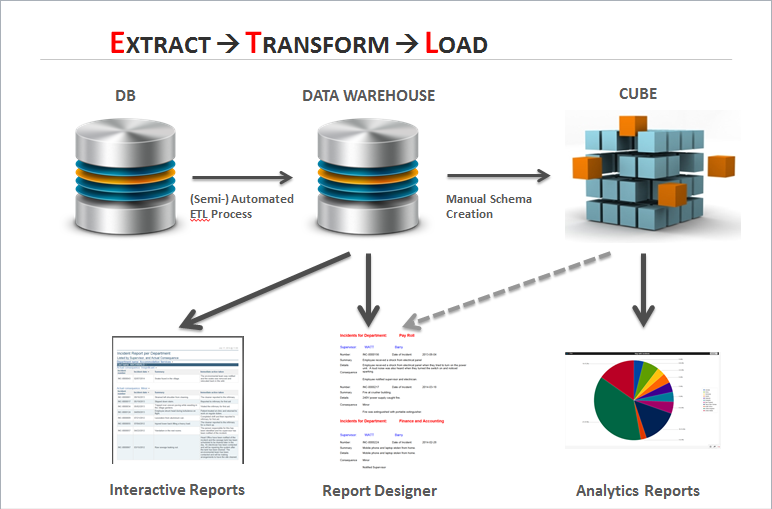"Data Warehouse", "Data Cubes" - and their UseIt is important to know that all the data analysis in the BI tool is based on information which is:
The first three steps are referred to as an ETL process: Extract - Load - Transfer. Both the Data Warehouse, and the Cube(s) will be used as the data source for data analysis, as shown in this illustration:
Creating the Structure of the Data Warehouse Extracting the data out of Evotix 360, transforming them and loading the data into the Data Warehouse is a (semi-) automated process. What this means is that either no, or only little manual intervention will be necessary to (re-)define the structure of the Data Warehouse when
The two main reasons for performing this step are:
Both of these will greatly facilitate data analysis with the BI tool when creating Interactive Reports, or when creating reports with the Report Designer. Creating the Structure of the Data Cube/Schema The system will automatically create Standard Cubes for those Components which have been selected for reporting. These standard cubes are basic, but will provide sufficient information for some complex analysis. These Standard Cubes will contain the following:
Creating additional Schemas for the Data Cubes will be a manual process, since these Cubes will need to be tailored to each clients requirements for more detailed or in depth data analysis. The presentation of data as Cubes is the base for the Analytics Reports, which allow actions like the following:
Feeding the Data from Evotix 360 into the Data Warehouse Since the BI tool is relying on the Data Warehouse for reporting, it is necessary to periodically "copy" the data from Evotix 360 into the Data Warehouse. This process is fully automated, and
The frequency of the updates will depend on the need for "up-to-date" information, and the amount and complexity of the data involved, and can vary
|
||||
|
Back to top |
 Copyright Evotix |
